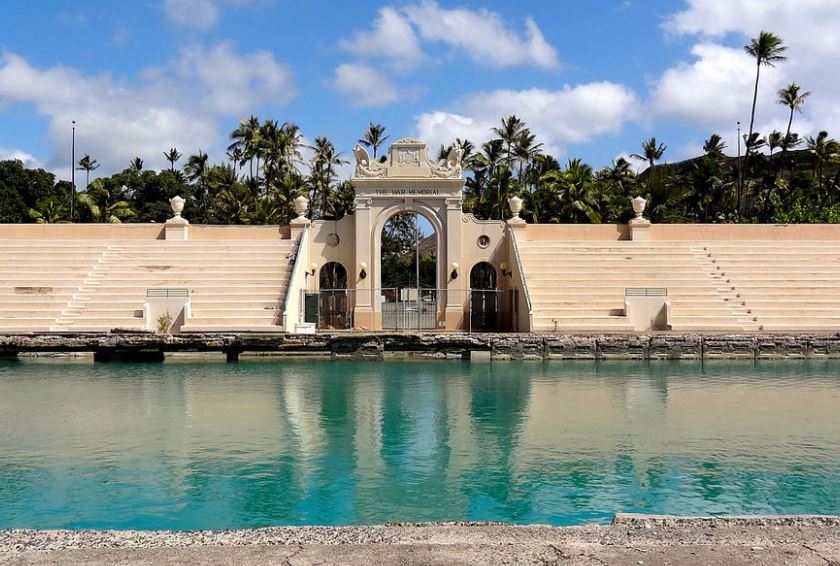Just before Veteran’s Day last week, we reached out to Mo Radke, the president of the Friends of the Natatorium, and asked him to provide an update on their efforts to preserve the historic memorial.
HHF: Last year on Veteran’s Day, the City and County of Honolulu issued the final Environmental Impact Statement for the rehabilitation of the historic War Memorial Natatorium. The City’s proposed action is to retain the physical structure of the memorial with a new sea wall and perimeter deck, while maintaining the historic integrity of this iconic structure that has been part of Waikīkī for over 90 years. Have any further actions taken place since this announcement?
MR: To date, a design needs to be formalized and the City and County of Honolulu administration would need to release funding for that to take place.
HHF: How does the Friends of the Natatorium plan to keep the project moving, especially given HART will remain a priority for some years ahead?
MR: This year was a difficult year to keep the ball rolling. A Natatorium restoration would provide a much-needed respite to Hawaii residents in the form of a large, socially-distanced venue for fitness and relaxation. Because HART demands a great deal of funds now and into the future, all fiscal streams need closer scrutiny – including government support for projects like the Natatorium. It’s not likely the present city administration will make any quick moves to fund the design, so some other options are appropriate: Engaging the new city administration, developing a solid public, private partnership where some funds come from the city and some funds come from the private sector.
The National Trust for Historic Preservation was instrumental in the bringing to the forefront our National Treasure, the Waikiki War Memorial Natatorium. We will continue to engage with NTHP and as we educate the new city and county of Honolulu of possibilities.
HHF: Imagine your niece/grandchild wanted to start his/her own grassroots effort to save an endangered site, what would be your most important words of advice?
MR: Educate! Start with your best-case scenario – the goal you’d like to see. Then: educate yourself, educate others, invite others to share ideas, then determine the best strategy to achieve that scenario.
HHF: Do you have other favorite historic places in the Islands? Please name one and tell us what makes it special to you.
MR: Kapi‘olani Park for sure! Another historic site that went through years of use, neglect, and then again, use. The history of the park makes me angry at first, sad in the middle, and thankful at the end. These things don’t just happen – it takes the efforts and determination of groups like the Kapi‘olani Park Preservation Society.
Mo Radke is president of the Friends of the Natatorium. A 30-year Navy veteran, he serves as chair of the Kane‘ohe Neighborhood Board, council member for DLNR’s Kane‘ohe Bay Regional Council, past president of the Rotary Club of Waikīki and Hawai‘i coordinator and instructor for Wounded Warrior and PTSD golf therapy clinics.
Further reference:
- 2018 Civil Beat Community Voice article written by Mo Radke, Restore The Pool At The Waikiki Natatorium
- 2016 Announcement: New Concept Unveiled for Waikiki War Memorial Natatorium
- HHF 2019 Article: Final Environmental Impact Statement issued for War Memorial Natatorium




